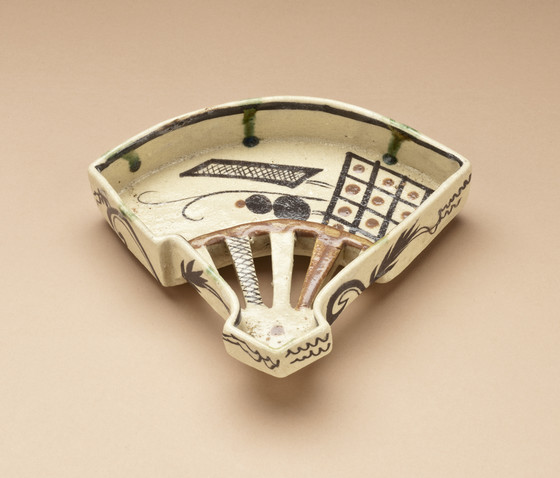Set of Five Food Vessels for the Tea Ceremony


Please log in to add this item to your gallery.
View comments
No comments have been posted yet.
Add a comment
Please log in to add comments.
Please log in to add tags.
* Nearly 20,000 images of artworks the museum believes to be in the public domain are available to download on this site.
Other images may be protected by copyright and other intellectual property rights.
By using any of these images you agree to LACMA's Terms of Use.
Set of Five Food Vessels for the Tea Ceremony
Alternate Title: 織部扇形向付
Japan, Momoyama period (1573-1615)
Ceramics
Oribe ware; glazed stoneware
a-e) Vessel: 1 1/2 x 5 3/4 x 6 1/2 in. (3.81 x 14.61 x 16.51 cm) each
Purchased with funds provided by David and Margaret Barry, the David Bohnett Foundation, the East Asian Art Council, Ann Colgin and Joe Wender, Janet Dreisen, the Edgerton Foundation, Bill and Dee Grinnell, Marilyn B. and Calvin B. Gross, the Kayne Foundation, Suzanne and Ric Kayne, Greg and Mechas Grinnell, Gail and Gerald Oppenheimer, and Alyce Woodward through the 2009 Collectors Committee (M.2009.45a-e)
Not currently on public view


